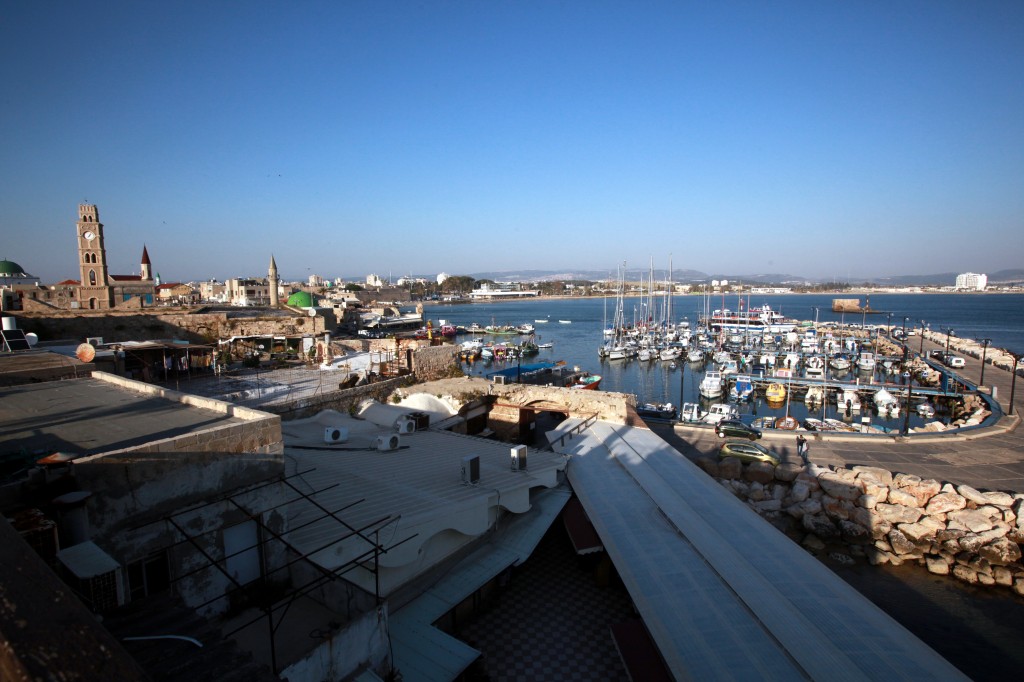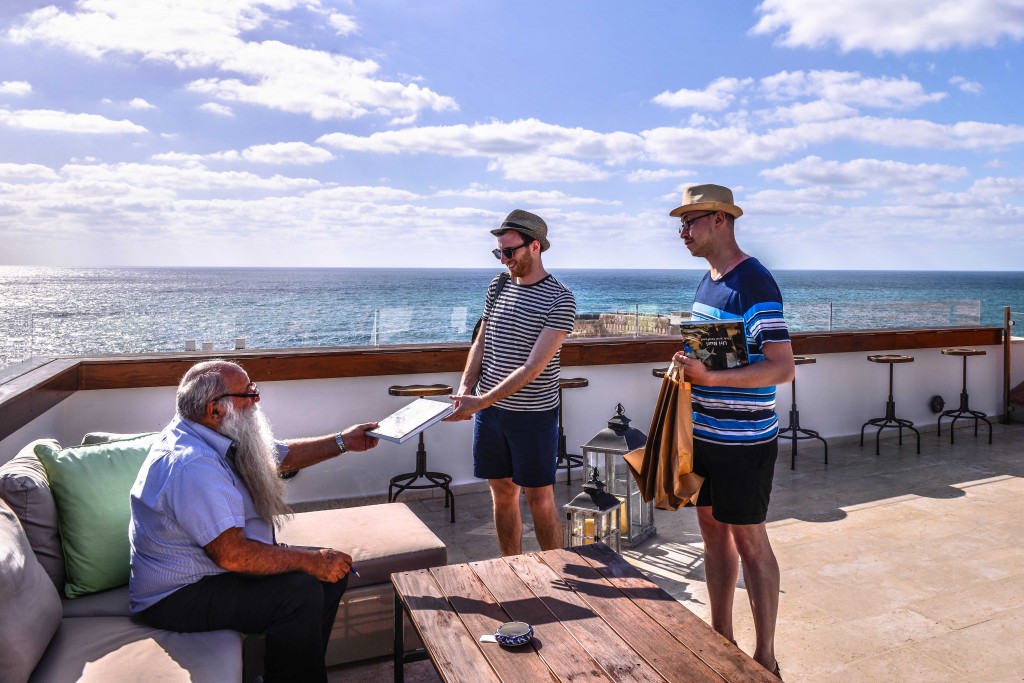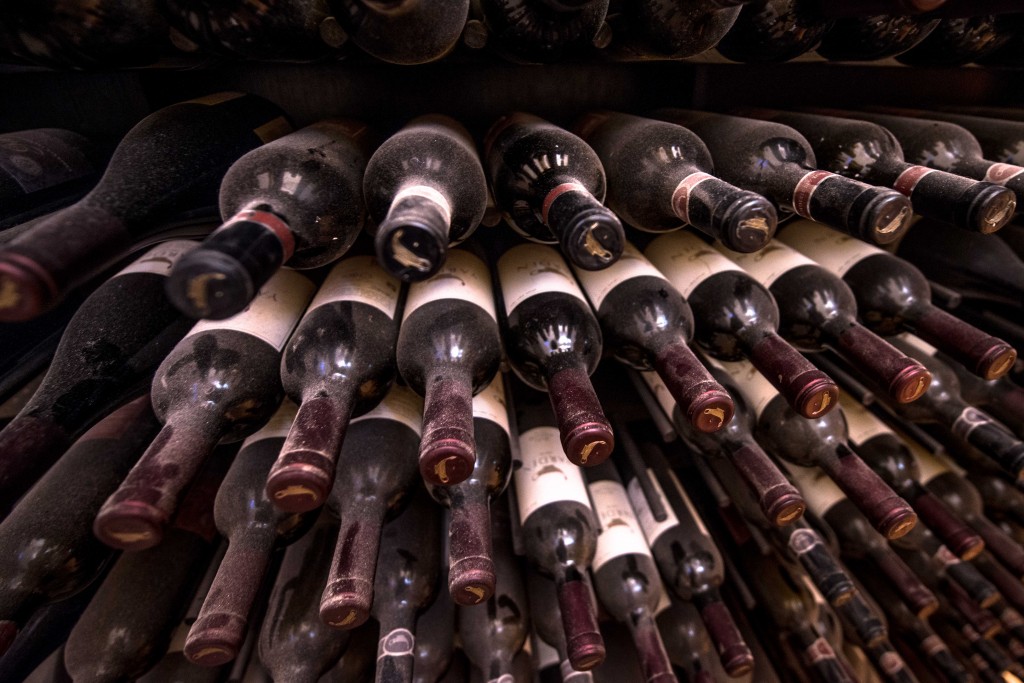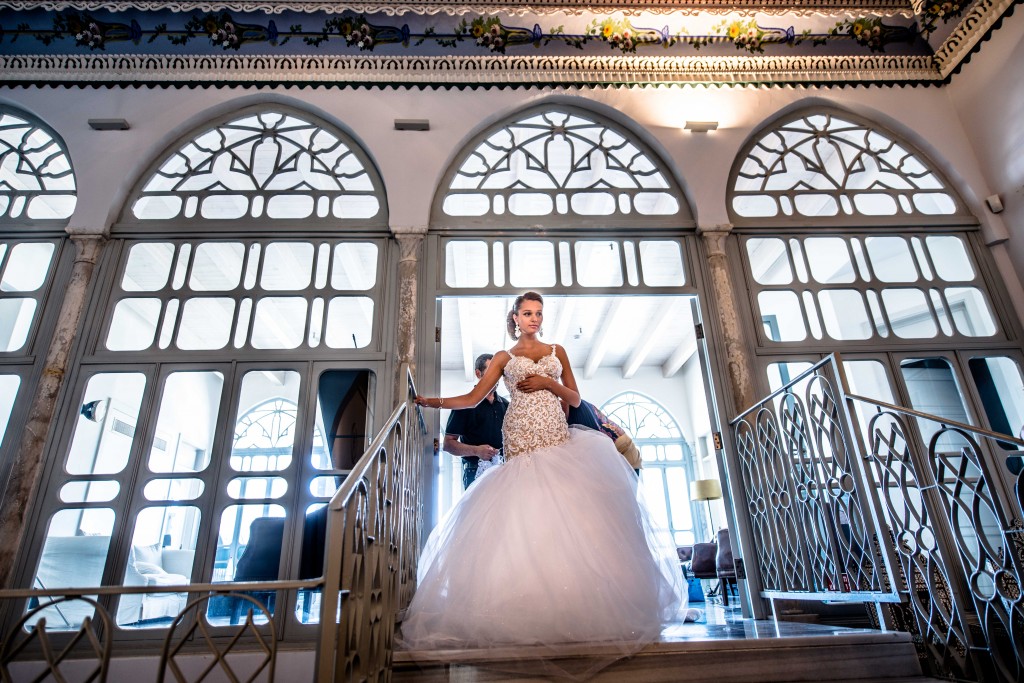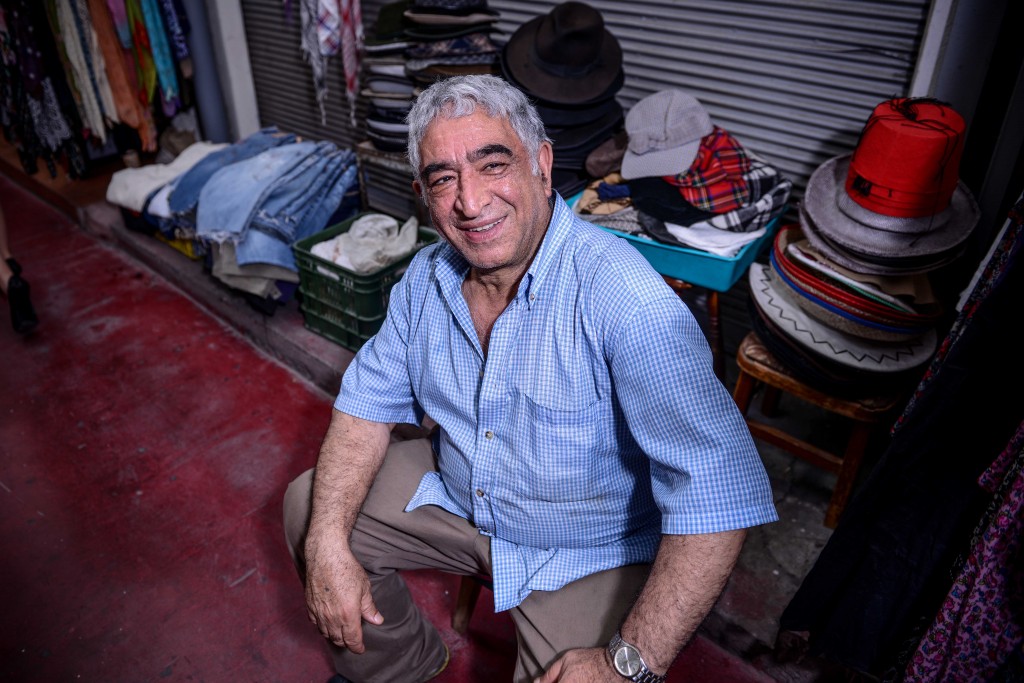On Israel’s northern coast there hides a gem of a port, where Jews and Arabs share an ancient dream and a surprisingly optimistic future.
In the early morning hours of March 22, 2013, Shimon Lankari, the mayor of Acre, was shot and wounded by an unidentified gunman. A day later, Lina Makhoul, a 19-year-old Arab Christian from Acre, won the hugely popular Israeli version of The Voice, a televised singing competition. Both events were emblematic of present-day Acre: a diverse, historically rich city fighting to escape its troubled past.
Acre is a city of great antiquity, and once served as the most important port in northern Israel. According to one Hebrew legend, the name is derived from the Book of Job, in which God speaks of the waters of the great flood, saying, “Hitherto shalt thou come, but no further.” The flood waters, the legend says, stopped at the shores of Acre. The Hebrew words “ad po” (“hitherto”) became “ad ko” and ultimately “Akko,” Acre’s Hebrew name. The name now seems ironically appropriate: For decades, modernity reached the edge of Acre, but went no further.
Acre’s old city, the heart of its historical patrimony, is today a poor, predominantly Arab-Israeli neighborhood. Its picture book sandstone walls surround a spit of land that juts out into the Mediterranean Sea. Inside is a warren of ramshackle alleyways and crumbling stone houses. Abandoned Ottoman khans (inns) stand next to half-excavated Crusader ruins. The souk (street market) consists of a few narrow cobblestone streets, with shops selling fish, spices, and other traditional delicacies. Many of the stalls, though, are shuttered, and a beautiful enclosed Turkish bazaar lies empty.
Walking its streets, one is forced to wonder why such a place—with its ancient structures, rich history, and valuable seafront real estate—has been neglected for so long.
But things are changing. Interest in developing the area, and the money to back it up, has begun to appear, as Israeli Jews begin to recognize Acre’s latent potential. The process hasn’t been easy. As in many other places around the world, developers must try to strike a balance between modernizing the area and retaining its historical authenticity. And as in all gentrification initiatives, the interests of the original residents must be addressed. This being Israel, moreover, these issues have been further complicated by political suspicions and religious tension.
Yet the tide of the 21st century has begun to come in, and a flood may be imminent. For Acre, modernity has arrived in the unlikely person of an Israeli seafood chef and a new five-star hotel called the Effendi.
Developers in Acre have plenty to work with. Even by the high standards of the Holy Land, the city’s 3,000-year history is impressive. Acre is mentioned by the Egyptian pharaohs and appears in the Bible. A litany of world-historical figures—from Alexander the Great and Julius Caesar to St. Paul and Marco Polo—have passed through it. For two centuries, it served as the main port for the medieval Crusader kingdom and a major trading center of the Eastern Mediterranean. Richard the Lionheart landed in Acre at the start of the Third Crusade, and the city was the last Christian holdout in the Holy Land before the Muslim reconquest. Napoleon bombarded the city in 1799, trying and failing to take it from the Ottomans. It was his last campaign in the Middle East, his Oriental Waterloo.
A sadistic Ottoman governor nicknamed “the butcher” (al-Jezzar in Arabic) was responsible for the old city’s towers, dry moat system, and a turquoise-domed grand mosque, which are still visible today. In the 19th century twilight of Turkish rule, Acre became a penal colony, best known today for incarcerating the prophet of the Baha’i faith, a religion begun in Persia as a modernized offshoot of Shiite Islam.
After the First World War, the new British rulers of Palestine used the Acre citadel—an imposing fortress in the heart of the old city—as a prison. Prior to Israel’s founding, fighters from the Jewish underground were imprisoned there, and a daring jailbreak in 1947 became a pivotal moment in the state’s pre-independence folklore. The story is still taught to Israeli schoolchildren. Over the ensuing decades, a modern, working-class town was established outside the old city. Today, it numbers over 40,000, mostly Jewish, residents.
Despite being designated a UNESCO World Heritage Site in 2001, the city’s remarkable story has, for the most part, been forgotten.
To most Israelis, Acre is best known for the smattering of seafood restaurants on and around its ancient seawall, next to a small marina with wooden fishing boats and tourist barges. On sunny weekends, tourists flock to these establishments, enjoying grilled grouper and roasted calamari next to the azure waters of the Mediterranean. Along with a distant view of the city of Haifa across the bay, customers are often entertained by young daredevils diving off the imposing seawall into the water below. Some locals wile away afternoons in nearby cafes and storefronts, usually with a nargila water pipe close to hand. Others fish from the stone remains of the old harbor fortifications. It’s a pleasant day trip.
The best and most prominent restaurant near the Acre marina is unquestionably Uri Buri, owned by an eccentric Israeli chef named Uri Jeremias (“Buri” is a type of fish). Situated in an Ottoman-era house that opens on to the sea, the décor is minimalist bordering on derelict—simple wooden tables and chairs, with salt on and in the walls. “I let it create its own ambience, I let the disease go wild,” Uri told me one recent weekday morning, referring to the sea salt that is literally eating away his establishment.
Uri takes the same laissez-faire approach toward himself. He sports a thick, unkempt white beard that hangs down to his wide midsection, creating the impression of a crusty maritime Santa Claus or the lost Israeli member of ZZ Top. Probably nearing 70, Uri hails from Nahariya, a town located a few miles north of Acre near the Lebanese border. He left home when he was 16 and spent four years traveling the world, including a road trip that took him from Germany to India. After going through a slew of professions—aircraft engineer, lifeguard, and accountant, to name a few—he found his true calling as a chef.
Despite a total lack of formal culinary training, Uri opened the original “Uri Buri” over two decades ago in Nahariya. He was a natural in the kitchen. Branches in Tel Aviv and the ancient Roman seafront town of Caesarea followed. His Acre restaurant opened 15 years ago and has become an attraction all its own. Israelis flock from around the country to indulge in its fresh, eclectic seafood dishes: sea bass cooked in a cauldron with coconut milk and apples, calamari with kumquats and grapefruit, shrimp and gorgonzola cheese. Uri’s restaurant, for many, has become synonymous with Acre, an anchor in a local market that is still adrift.
This was not always the case. When Uri’s restaurant first opened, Acre was an even rougher place than it is now. “I was born in a unique time, with a pioneering ethos handed down from my parents and their generation, the people who built the country,” Uri says when asked “why Acre?” He could have easily opened a bigger, flashier version in Tel Aviv and raked in the profits. But that wasn’t his goal. Uri feels it his mission to, as he puts it, “revive Acre, an ancient city thousands of years old, from its coma.” The restaurant was only the first step.
A few minutes’ walk from Uri’s restaurant, through a maze of small alleys, is what he hopes and believes will be Acre’s future: The Effendi, a 12-room, five-story luxury boutique hotel, which opened last year after an eight-year restoration. The project is the physical manifestation of Uri’s belief that life shouldn’t be built “according to goals and plans.” All that is needed, he says, is “a tiny bit of brains and some luck.”
The restaurant was Uri’s first step to “revive Acre, an ancient city thousands of years old, from its coma.”
He was certainly pushing the latter. Uri took two neglected and crumbling Ottoman-era villas and completely transformed them. From the street, only the smooth finish of the concrete exterior and the modern glass entrance hint at the opulence inside the Effendi. As Uri led me on a tour of what is now one of Israel’s swankier hotels, he often repeated the words “authenticity,” “genuineness,” and “soul.” He emphasized the connection between the hotel and the outside environment of the old city, and never mind the fact that guests pay NIS 1500 to NIS 3000 ($400-$800) a night for the privilege of experiencing it.
This connection begins with the architecture and décor, the product of a painstaking restoration that cost an estimated NIS 20 million (about $6 million). Foundations had to be reinforced, rotting beams replaced, and cracks in the outer walls filled. Pounds of pigeon excrement had to be removed, along with additions that had no connection to the property’s original purpose as the home of a wealthy merchant family. The Israeli Antiquities Authority supervised the entire project.
As part of this striving for authenticity, the hotel’s most unique feature is the restored murals that adorn the guestrooms and common spaces: flowery turquoise and gold patterns, intricate lattice designs, and a wall-sized painting depicting Istanbul, the Bosphorus, and the Orient Express. (The painter, thought to be a Jerusalemite Jew, had apparently never seen a railroad before. In lieu of train cars, he painted covered wagons with smoke billowing overhead.) When Uri and his team began their work, most of the murals were either peeling or plastered over. Professionals from Italy were brought in to get the colors and design as close to the originals as possible.
The end result is impressive. The Effendi succeeds in melding the traditional with the modern and luxury with simplicity. “In my life, I learned two important lessons about cooking,” Uri said. “One, you need good raw materials. And two, don’t ruin what you already have.”
In accordance with this ethos, a deep well dating back to Roman times was left in the high-ceilinged lobby. An arched passageway leads from the lobby into the restaurant, where a long wooden table, harkening back to medieval times, takes up most of the narrow space. Down a short flight of stairs, the hotel’s wine cellar was built around the remains of an old Byzantine vault. Hundreds of bottles of boutique Israeli wines cover the walls, with stones from the Byzantine, Crusader, and Ottoman periods arrayed above like a tree ring.
And on it went, delightfully so. The two-person spa on the ground floor is a preserved 400-year-old Turkish hamam (bath). The tiny soaps in the modern, airy rooms are manufactured with olive oil and roses using a historically-accurate method. On the top floor, just off the wide patio with its Bedouin-style floor cushions, is a plush leather chair over a century old, originally from Damascus. When I sat down, I felt as if I had been enveloped in a coat of marshmallows.
This attention to historical detail is of a piece with Uri’s philosophy about Acre in general. The city’s charms have to be preserved, he said, so that the place won’t turn into just another “plastic-fantastic Mediterranean city” where everything looks, feels, and tastes the same.
Standing on the Effendi’s roof deck looking out at Acre, it is very difficult to imagine the old city turning into such a tourist trap. Far from it. All around, decrepit stone houses stand as they have for decades. On the surrounding rooftops, dilapidated metal awnings and rusting satellite dishes testify to the area’s poverty. Not even the brilliant blue of the Mediterranean in the distance can erase the gnawing question at the heart of Uri’s lavish project: Will people really spend hundreds of dollars a night for a view of a neighboring Arab family’s laundry?
Uri saw the opening of the Effendi as nothing less than a formative event in Acre’s modern history. The hotel was supposed to act as a trigger, to get “a certain kind of person” to come to Acre, to spend the night in Acre. The objective was to make the old city a destination and not just a day trip.
But getting these “certain kinds of people” has proved more difficult than expected. The hotel itself has received rave reviews. A prominent international travel magazine voted it one of the best new hotels of 2012, and it is Israel’s only entry on the exclusive Small Luxury Hotels of the World website. But occupancy is down, as I saw firsthand on my visit: Aside from one middle-aged couple checking out and two women using the spa, only hotel staff was visible.
“I can’t say the hotel has yet met expectations, to put it mildly,” Uri tells me delicately. “In the eight and a half years we were building, I was sure, based on feedback from friends, that the hotel would be packed.” One year in, he says, “we’re not in the place we wanted to be.”
“Israelis,” he continues, see the old city “as God-forsaken, poor and neglected, like Gaza.” Given this stereotype, I asked Uri who he saw as his target clientele. He replied vaguely. “Everyone,” he says, “that knows how to enjoy something like this.” When pressed, he got more specific, talking about wine and food lovers, or couples looking to celebrate an anniversary or another romantic occasion.
Yet the high room rates already self-select to a small, wealthy group of people. Enjoying something like the Effendi also requires a wealth of imagination, an open-mindedness toward Muslim and Arab culture. It isn’t at all clear whether Jewish Israelis will jump at the chance to stay in a hotel adjacent to a mosque, with loudspeakers putting out five daily calls to prayer (attenuated, of course, by the Effendi’s double-paned windows).
Is the Effendi a multi-million dollar folly? The jury, it seems, is still out.
Jewish Israelis’ fears concerning the old city are rooted in past perceptions of Acre as a place of religious and political tension. A few years ago, a riot erupted between local Jews and Arabs on Yom Kippur. An Israeli friend, a seasoned crime reporter, told me it was one of the worst cases of internal Arab-Jewish violence he has ever personally witnessed.
As in most of the country, things have improved in recent years. A source in the Israeli national police’s northern district told me that, while the situation in Acre five or six years ago was “more tense,” crime statistics have plummeted over the past few years (the shooting of the mayor notwithstanding). The city is going through a good period, relatively calm and peaceful. “Acre doesn’t preoccupy us like in the past,” he said. “It’s like any other city, there’s nothing unique. I wouldn’t have my 12-year old daughter walking around [the old city] at night, but that goes for Tel Aviv too.”
The people responsible for Acre’s redevelopment insist that the problem isn’t crime or politics, but public relations. The Acre municipality spokesman, like Uri before him, told me that what is needed is a “rebranding” effort to change negative conceptions among the Israeli public. “We’re turning Acre into a real cultural city on the Mediterranean,” the spokesman said. “We’re leveraging upwards the reality of Arabs and Jews living together.” In this regard, Lina Makhoul, the winner of The Voice mentioned above, is a huge asset.
Such business-school speak is common. Dudu Harari, head of the Old Acre Development Company and city resident since the 1950s, told me, “Acre has no resources other than tourism.… History is the product that will be the city’s redemption.”
The Israeli government came to this conclusion back in 1993, setting up Dudu’s company to carry out a comprehensive revival plan. It was the first time in decades that someone had taken an interest in the old city.
Twenty years and an estimated NIS 600 million (about $170 million) later, and given how the old city still looks, it’s tempting to ask why the physical development of the neighborhood isn’t further along. Dudu explained that much of the initial work went on below ground. Acre’s pre-1948 infrastructure had to be modernized and many historic ruins excavated. Shaky building foundations, water mains, drainage pipes, electricity lines, and public lighting had to be fixed or installed for the first time. “We used to have raw sewage running in the streets,” Dudu reminisced.
Dudu has no doubt that the lives of the local Arab residents have improved dramatically. In addition to the new infrastructure and services, local property values have gone up and unemployment has been more than halved. This is why the Effendi—as both an employer and a high-end property—is so important. It is also, according to the people I spoke to, just the beginning.
The Israeli government has plans to sell the Khan al-Umdan (“Inn of Pillars” in Arabic), arguably the old city’s most impressive structure. Today, this elegant Ottoman-era caravansary—a combination inn, warehouse, and market—is a literal shell of its former self. Situated on the seaside next to the harbor, the site is boarded up, with weeds protruding from a cracked courtyard. Its sandstone arches and the eponymous colonnades have fallen into disrepair. The only commercial activity is a young girl selling fresh juice to tourists from a wooden cart. A local official told me that British investors want to develop the property into another luxury hotel.
Not everyone is bullish about Acre’s future prospects, however. A veteran executive in the Israeli hotel industry, who asked to remain anonymous, told me that he was highly skeptical about the Effendi and Acre in general. The Effendi, he said, is indeed “special, beautiful, professional, and different.” But there was simply “no economic logic” behind the venture. It is a figment, he said, “of someone’s fantasy.”
Dudu has no doubt that the lives of the local Arab residents have improved dramatically. In addition to the new infrastructure and services, local property values have gone up and unemployment has been more than halved.
The executive rattled off a number of problems with the hotel: Physical access to the property, for example, is a problem for any tourist with a car, to say nothing of heavy luggage. The dimly-lit alleyways of the old city, he added, aren’t helpful in attracting unseasoned foreign tourists. An urban boutique hotel like the Effendi, moreover, is viewed as a luxury, and thus would be the first hit by any future economic downturn. The larger hotels in the big cities—such as Tel Aviv or Jerusalem—can afford to slash prices. The Effendi, with its twelve rooms, wouldn’t even be able to support its operating costs, let alone return its sizable investment. Uri’s insistence on authenticity, which left potential space for additional rooms as large common areas, is puzzling from a business standpoint.
But the major issue, the executive said, was that the old city’s added value—its “Arab-Jewish texture, its different smells, sights, and sounds”—can sometimes be a liability, as well. A tourist destination like Acre is susceptible to geopolitical shifts. “The security situation changes, and people will stop coming,” he said, snapping his fingers.
He has reason to be cautious. During the Second Intifada, Jewish Israelis stopped venturing into predominantly Arab towns and villages—both on principle (what they perceived as Arab-Israeli support for the Palestinian cause) as well as concerns for personal safety. Intercommunal relations have thankfully improved since then, but even Uri acknowledges that the early years of the last decade were difficult ones for Acre.
One recent lunchtime in the old city’s famous Hummus Said restaurant (its menu has two items: hummus and hummus with fava beans), I struck up a conversation with my tablemate, Avraham. A middle-aged Jewish Israeli, Avraham hails from the Krayot, the industrial townships between Acre and Haifa. He has been coming to Hummus Said for over thirty years. The staff greeted him warmly, with hugs and a few extra falafel balls. Avraham said that the old city has changed a lot in recent years. An electrician by profession, he pointed at the souk’s main thoroughfare, bustling with people, and said he had installed much of the electrical and communications wiring.
But during the Second Intifada riots broke out in the old city and some locals, as he put it, “burned things.” Avraham was called back to repair the damage. “It was good for my business,” he said with a chuckle, “but [the destruction was] completely needless.”
A few steps up the street from the Effendi is a simple wooden doorway leading into a large shrine used by the Yashruti, a Sufi Muslim order that originated in North Africa. With money from the leader of the order, a sheikh living in Jordan, the complex is undergoing a complete overhaul. It might be a dusty construction site now, but its preserved marble-mosaic arches are a testament to the shrine’s intrinsic beauty.
Jalal, the site manager and an old city resident, delayed his break for midday prayers to discuss the history of the place and the order. Yashrutis, like most Sufi mystics, believe in coexistence and love for all humanity. It is a nice relief from Israel’s usual interfaith tension. Down the street is the Baha’i shrine and the Jewish-owned Effendi, while a mosque stands next door.
In Israel, though, religion can’t be separated from socioeconomic inequality. The old city, which is predominantly Arab, has long been neglected by the state. “There’s the poverty line,” says Jalal, “and then there’s us below the poverty line.” When I ask Jalal what the local community thought of the Effendi, he tells me that there were people both for and against the project. Some locals are suspicious of Jews buying up local properties. They fear that such ventures are a prelude to eventual displacement. Jalal, however, is a supporter.
“I was one of those for [the hotel], just based on interests,” he explains. “It’s in my interest for Uri to come into Acre.”
“I’m using you,” he says, by which he meant all Jewish Israelis. “The municipality and the government won’t listen to me, but they’ll listen to you. You come in, and things might change. [The authorities] will clean things up, police will respond quicker, there will be tourists, business, jobs…”
Jalal is a pragmatist. He wants to use Acre’s incipient revival to improve the lot of his community, just as people like Uri, with their multi-million dollar ventures, want to use Acre’s history and potential to make money. (Uri’s other, nobler motives notwithstanding, he is still a businessman.) It is a symbiotic relationship that is only in its early stages. No one knows how it will all end, both for developers and longtime residents. The physical act of scrubbing off decades of dirt and disregard is the easy part. But the hard work of building a city that preserves its ancient flavor while making itself accessible to domestic and foreign tourists, and inviting to business investment, lies ahead. Whatever the result looks like, it’s a rare and important opportunity to flourish rather than fight, to coexist in the framework of history and investment and positive public works.
In historical-civilizational terms, Acre has been around forever. Its current revival is simply the next chapter in the city’s (mostly) illustrious story. It remains to be seen whether the developers who come after Uri and the Effendi will be as true to this spirit and tradition. In the legend of the biblical flood, the waters stopped just short of Acre, sparing the city from destruction. Today, a deluge of money holds the promise of restoring Acre, of building something new. It also holds the peril of being much less forgiving if it fails.
![]()
Banner Photo: Aviram Valdman/The Tower






